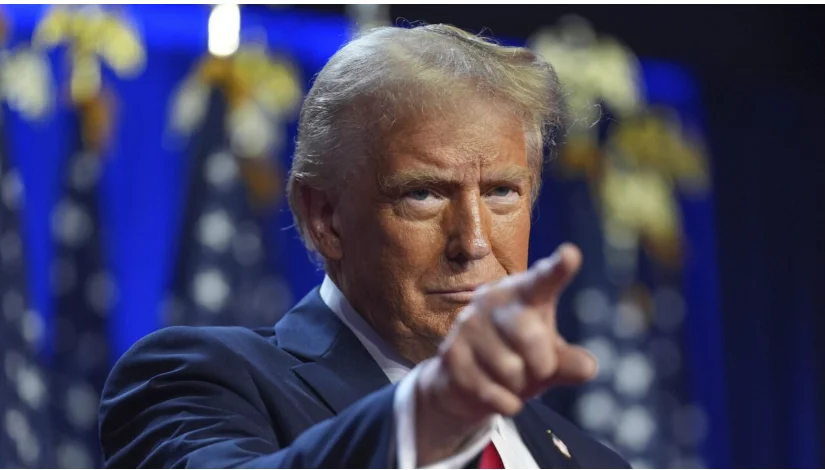Bitcoin briefly crossed the $97,000 threshold on Wednesday, propelled by China’s sweeping liquidity injection and mounting speculation over possible shifts in U.S. Federal Reserve policy. The digital asset quickly corrected, settling around $96,000 as markets absorbed the implications of major global macroeconomic developments.
This latest price movement comes amid growing investor optimism following the People’s Bank of China’s (PBOC) announcement of a massive economic stimulus package, aimed at reviving flagging domestic growth and reassuring global markets.
China Unleashes $138 Billion Stimulus
On Wednesday, the PBOC unveiled a $138 billion liquidity boost, executed via a series of coordinated policy tools. Central to the stimulus was a 0.5 percentage point cut to the reserve requirement ratio (RRR) for banks, a move that instantly unlocked about 1 trillion yuan in long-term liquidity. This was the largest RRR reduction in over two years.
China also lowered its key policy interest rate by 10 basis points and reduced the seven-day reverse repurchase rate from 1.5% to 1.4%. To further drive domestic consumption and social support initiatives, the central bank introduced a 500-billion-yuan re-lending program targeting elderly care and consumption. Additional measures included incentives for reduced mortgage rates and more favorable auto financing.
These aggressive steps signaled Beijing’s determination to stabilize its economy amid property sector turbulence, soft consumer demand, and rising youth unemployment. The announcement’s timing was no accident—it coincided with revived U.S.-China trade diplomacy.
Trade Talks Add to Market Optimism
Hours before China’s monetary policy announcement, U.S. Treasury Secretary Scott Bessent confirmed that he would meet with Chinese Vice Premier He Lifeng in Switzerland for formal trade talks over the weekend. This marks the first bilateral dialogue since the U.S. raised tariffs on Chinese imports to 145% under former President Donald Trump.
Bessent’s remarks hinted at a desire to de-escalate tensions. “Thanks to POTUS, the world has been coming to the U.S., and China has been the missing piece—we will meet on Saturday and Sunday to discuss our shared interests. The current tariffs and trade barriers are unsustainable, but we don’t want to decouple. What we want is fair trade,” he explained.
The dual momentum of trade discussions and economic stimulus created a wave of optimism in global financial markets.
Bitcoin’s Surge Follows Broader Market Rally
Investors responded swiftly to the combination of China’s stimulus and the promise of renewed U.S.-China dialogue. The S&P 500 futures jumped more than 1%, while Bitcoin mirrored the risk-on sentiment by rallying past the $97,000 mark—an intraday high before slipping back slightly to $96,497, representing a 2.16% gain over 24 hours.
Crypto analysts suggest that Bitcoin is acting as a leading macroeconomic indicator, highly sensitive to liquidity shifts and central bank actions.
Fed’s Quiet Balance Sheet Expansion Fuels Speculation
Adding another layer of intrigue, the U.S. Federal Reserve made two unannounced Treasury purchases earlier this week. On May 5, it bought $20 billion in three-year notes, followed by a $14.8 billion purchase in 10-year notes on May 6. These back-to-back acquisitions, totaling $34.8 billion, occurred without any formal QE announcement.
These moves raised eyebrows across financial circles, as they signal a potential soft return to quantitative easing—a policy tool the Fed previously used to support markets during crises. With no press briefing accompanying the purchases, traders interpreted the actions as a possible prelude to more significant interventions in the near future.
All eyes now turn to the upcoming Federal Open Market Committee (FOMC) meeting, where investors expect clarity on interest rate paths, liquidity provisions, and broader economic outlooks.
Arthur Hayes: Crypto Will Explode if QE Returns
Former BitMEX CEO Arthur Hayes, a prominent voice in crypto circles, believes these developments could spark a massive bull run. In his latest blog post, Hayes argued that Bitcoin is on track to reach $250,000 by the end of 2025 if the Fed continues down the path of monetary easing.
“The Fed’s liquidity moves are the beginning of that process,” Hayes wrote. “Bitcoin thrives in environments where central banks inject liquidity into the system. If full-scale QE resumes, the crypto market will likely outperform all traditional assets.”
He further noted that while institutional interest in Bitcoin has risen due to ETFs and regulatory clarity, macroeconomic factors remain the primary price driver in the short to medium term.
Bitcoin: A Gauge of Global Liquidity
Bitcoin’s recent rally underscores its evolving role in global finance. As central banks navigate inflation, stagnation, and trade conflicts, Bitcoin increasingly reflects investor sentiment around liquidity conditions. Its performance often anticipates broader market reactions, making it an early indicator of financial system health.
With China’s stimulus rolling out, trade diplomacy heating up, and the Fed’s direction still uncertain, Bitcoin’s price action could remain volatile in the days ahead. Yet, to many analysts, this volatility isn’t weakness—it’s a sign of Bitcoin’s growing integration with global monetary policy cycles.
What Comes Next?
As investors await guidance from the Fed, several key questions remain: Will U.S. policymakers hint at renewed quantitative easing? Can China’s stimulus reverse slowing economic momentum? Will U.S.-China trade talks lead to meaningful tariff reforms?
Each answer could significantly impact not only traditional markets but also digital assets like Bitcoin. For now, Bitcoin’s brief trip above $97,000 shows that crypto remains deeply entwined with global liquidity—and could rise even higher if current trends continue.












